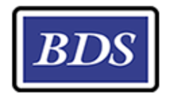As the automotive industry navigates the transition towards electric vehicles (EVs), various components crucially impact their performance and longevity. Among these, bearings play a fundamental role in ensuring efficient and smooth operations within EVs. However, the shift towards electric mobility has introduced new challenges, notably electrical erosion, which poses significant hurdles for bearing functionality in these advanced vehicles.
Global Market Impact of Bearings in the EV Automotive Market
Bearings serve as essential components within EVs, providing support and reducing friction between moving parts, such as the motor, transmission, and wheels. In an electric vehicle, the drivetrain operates differently compared to traditional internal combustion engine vehicles. This alteration places increased emphasis on bearing efficiency due to the unique demands of electric motors, which produce higher torque at lower speeds, leading to increased stress on bearings.
The global market for bearings in the EV automotive sector has experienced substantial growth. As EV production continues to surge worldwide, the demand for specialized bearings tailored to electric vehicle requirements has risen significantly. Manufacturers are developing bearings that can withstand higher loads, operate efficiently at various speeds, and endure the unique conditions present in electric vehicles.

Challenges of Electrical Erosion
Electrical erosion is a critical challenge faced by bearings in EVs. This phenomenon occurs due to the electrical currents generated within the motor. In an electric motor, the rotating rotor creates magnetic fields, inducing currents in the bearing components, particularly in the rolling elements and raceways.
These currents lead to electrical discharge, causing pitting, fluting, and premature failure of the bearing surfaces. The type of electrical current does not matter and how much damage occurs depends on current intensity, duration of the current, bearing load, speed, and lubrication.
The consequences of electrical erosion can be detrimental, impacting the reliability and lifespan of the bearings. This erosion not only affects the performance of the bearings but also poses safety concerns within the EV drivetrain. The degradation of bearing surfaces due to electrical erosion can lead to increased vibrations, noise, and ultimately, unexpected failures, compromising the overall functionality of the vehicle.
Mitigating Electrical Erosion
Manufacturers and researchers are actively working on solutions to mitigate electrical erosion in bearings used in electric vehicles. Various approaches are being explored to address this challenge.

Insulation Techniques
Implementing specialized coatings or insulating materials on bearing surfaces to minimize the impact of electrical currents and reduce erosion.
- Coating Application: Applying specialized coatings on bearing surfaces to create an insulating layer that helps prevent electrical currents from causing erosion. These coatings can be made from materials like ceramics, polymers, or specific metal oxides, providing a protective barrier against electrical discharge.
- Ceramic Coatings: Using ceramic materials like aluminum oxide or silicon nitride as coatings or embedded layers in bearings to enhance insulation properties. Ceramic coatings offer high dielectric strength and resistance to electrical currents, reducing the risk of erosion.
- Surface Treatments: Employing surface treatments such as plasma spraying or physical vapor deposition (PVD) to deposit thin insulating layers on bearing components. These treatments improve the surface properties, increasing resistance to electrical erosion.
- Insulating Additives: Introducing insulating additives or fillers into the bearing material itself to enhance its ability to resist electrical currents. These additives can be incorporated into the bearing's structure during the manufacturing process to improve its insulation properties.
- Hybrid Bearing Designs: Developing hybrid bearing designs that combine insulating materials or coatings with conductive materials strategically placed to create barriers against electrical currents while maintaining mechanical performance.
- Composite Bearings: Utilizing composite materials with a blend of insulating components to create bearings that offer both mechanical strength and electrical insulation, reducing the risk of erosion.
- Advanced Material Selection: Researching and employing advanced materials with inherently higher resistance to electrical currents, reducing the likelihood of erosion in bearings.
These insulation techniques aim to create protective layers or alter the bearing's structure to minimize the impact of electrical currents, thereby improving the durability and reliability of bearings in electric vehicles.

Material Selection
Several new materials have been developed and researched to mitigate electrical erosion in bearings used in electric vehicles. These materials aim to improve the resistance of bearings against electrical currents, reducing the impact of erosion.
- Ceramic-based Materials: Ceramics, such as silicon nitride (Si3N4) and aluminum oxide (Al2O3), are widely used due to their excellent electrical insulation properties. Bearings made from these ceramics or incorporating ceramic elements exhibit high resistance to electrical currents, minimizing the risk of erosion.
- Hybrid Ceramic Bearings: These bearings combine traditional bearing materials like steel with ceramic rolling elements (balls or rollers). The ceramic elements, often made of silicon nitride, offer enhanced resistance to electrical currents compared to conventional steel, reducing erosion effects.
- Electrically Insulating Coatings: Innovative coatings containing materials like diamond-like carbon (DLC) or specific polymers are applied to bearing surfaces. These coatings act as insulating barriers, reducing the impact of electrical currents and mitigating erosion.
- Engineered Polymers and Composites: Manufacturers are exploring advanced polymers and composite materials with tailored properties, incorporating additives or fillers that enhance their electrical insulation capabilities. These materials are being used to create bearing components that offer both mechanical strength and high resistance to electrical erosion.
- Metal Alloys with Improved Characteristics: Researchers are developing metal alloys with improved electrical properties, such as higher resistivity and reduced susceptibility to electrical currents. These alloys, when used in bearing components, aim to mitigate erosion while maintaining mechanical performance.
- Carbon-Based Materials: Certain carbon-based materials, such as graphene or carbon nanotubes, are being investigated for their potential in enhancing the electrical resistance of bearings. These materials exhibit unique electrical properties that could be utilized to create bearings more resilient to electrical erosion.
- Nanostructured Materials: Advancements in nanotechnology have led to the development of nanostructured materials with tailored properties. These materials are being explored to create bearings with improved resistance to electrical currents and reduced erosion effects at the nanoscale level.
These new materials and innovative approaches represent ongoing efforts within the bearing industry to address the challenges posed by electrical erosion in the context of electric vehicles.

Improved Design
Several innovative bearing designs have been developed to minimize the paths for electrical currents, aiming to mitigate electrical erosion in bearings used in electric vehicles. These designs focus on reducing the impact of electrical currents on bearing components, thereby improving their resistance to erosion.
- Insulated Bearings: Bearings specifically designed with insulating materials strategically placed between the rolling elements and raceways to interrupt the paths for electrical currents. These insulating layers or barriers help minimize the effects of electrical discharge, reducing erosion.
- Hybrid Bearings: Hybrid bearing designs combine materials with different electrical properties to create barriers against electrical currents. By integrating insulating materials or coatings with conductive elements in specific areas of the bearing, these designs control the flow of electrical currents, reducing erosion risk.
- Non-Metallic Bearings: Bearings made from non-metallic materials, such as certain polymers or composites, offer inherent electrical insulation. These non-metallic bearings provide alternative solutions to traditional metallic bearings, minimizing the impact of electrical currents on bearing surfaces.
- Integrated Insulation Techniques: Bearings incorporating integrated insulation techniques within their structure, such as embedded insulating layers or coatings on critical surfaces, aim to limit the paths for electrical currents. These designs prevent direct contact between conducting components, reducing erosion effects.
- Modified Cage Designs: The cage, which holds the rolling elements in place, is modified to incorporate insulating materials or altered geometry to reduce the transmission of electrical currents. These modifications help create barriers and limit the impact of currents on bearing surfaces.
- Segmented Bearings: Bearings designed with segmented or divided components using insulating materials or structures to break the electrical paths. By separating conductive elements with insulating sections, these designs aim to minimize the flow of electrical currents and decrease erosion.
- Improved Sealing Systems: Upgraded sealing systems around the bearings can help prevent the ingress of contaminants that might exacerbate electrical erosion. By maintaining a cleaner environment within the bearing, these sealing systems contribute to reducing erosion effects.
As the electric vehicle (EV) market continues its rapid expansion, the challenge of electrical erosion in bearings remains a focal point for innovation and advancement within the automotive industry. While numerous strategies and pioneering solutions have been introduced to mitigate this issue, the pursuit of resilient, long-lasting bearings that withstand the unique stresses of electric mobility persists.
Manufacturers, researchers, and engineers remain committed to developing novel materials, pioneering designs, and cutting-edge technologies to fortify bearings against electrical erosion, ensuring the reliability, safety, and longevity of electric vehicles. As the quest for sustainable and efficient transportation intensifies, addressing the challenges of electrical erosion stands as a testament to the industry's unwavering dedication to shaping the future of electric mobility.

Visit our website for articles and blog posts related to industry innovations, trends, and informative guides. BDS prides itself on sharing a vast array of bearing knowledge through our LinkedIn Posts, Articles and our Website Blog. If you are not a subscriber to our monthly newsletter, sign-up on our website today!





